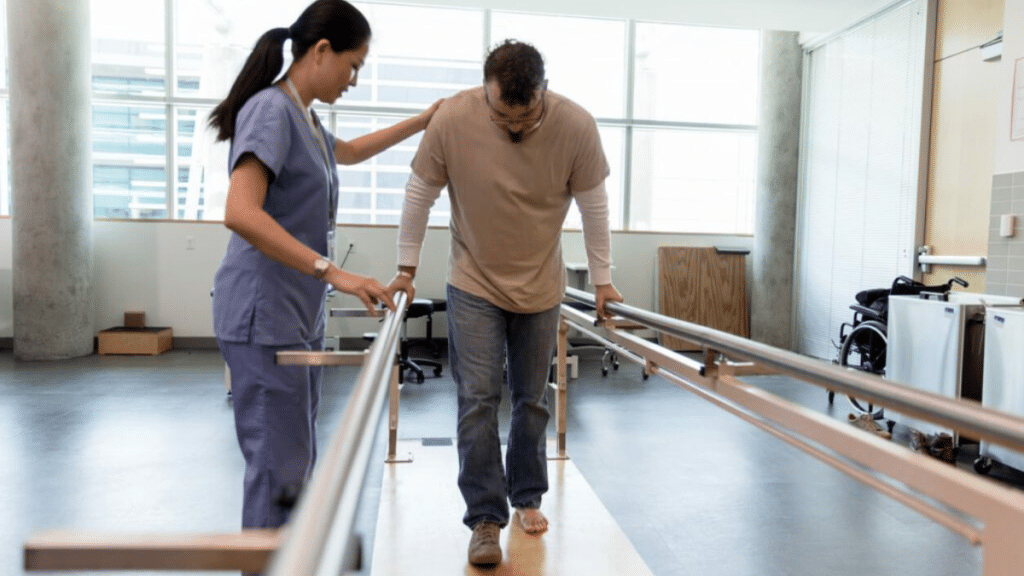Physical therapy plays a key role in rebuilding strength, fixing injuries, and helping people get back to daily life. When someone gets hurt or has surgery, moving again often feels hard or even impossible. But through personalized physical therapy, healing becomes faster and more complete. Movement is the foundation of recovery, making it essential for restoring function and reducing pain. With millions of Americans facing injuries, surgeries, or chronic conditions each year, physical therapy has become a vital part of effective rehab. This article explores how physical therapy helps heal through movement, the techniques involved, and practical tips to get the most out of rehab.
The Role of Physical Therapy in Rehabilitation
Understanding Physical Therapy and Its Goals
Physical therapy is a healthcare field focused on improving movement and reducing pain. Therapists assess your body, identify problem areas, and create plans to help you heal. The main goals are to ease pain, restore normal movement, and prevent future injuries. Multiple studies show that physical therapy is a proven way to recover from injuries and surgeries faster while avoiding long-term issues. It’s a safe, drug-free approach that supports your body’s natural healing process.
Common Conditions Rehabilitated Through Physical Therapy
Physical therapy treats many health issues, including:
- Musculoskeletal injuries, such as broken bones or torn ligaments.
- Post-surgical recovery like knee replacements or shoulder repairs.
- Neurological conditions including stroke or traumatic brain injury.
- Chronic pain, such as arthritis or fibromyalgia, that affects daily life.
Each condition requires a tailored approach, focusing on specific movements and exercises to rebuild strength and function.
The Multidisciplinary Approach in Rehab
Rehab isn’t just about physical therapy. It usually involves a team — doctors, chiropractors, and other specialists work together. A physical therapist designs a custom plan that complements other treatments. This teamwork ensures the recovery process integrates multiple strategies, making healing more efficient and complete. Explore how Laguna Beach drug rehab integrates physical therapy in rehab, promoting healing through movement for a effective recovery experience.
Types of Physical Therapy Techniques Used in Rehab
Manual Therapy and Hands-On Techniques
Manual therapy involves hands-on work. Therapists use gentle joint movements, massage, and soft tissue manipulation to reduce tightness and pain. Think of it like tuning a musical instrument — if parts are out of sync, movement becomes stiff or painful. Fixing these restrictions helps joints move smoothly again, making everyday activities easier.
Therapeutic Exercise and Movement Strategies
Exercises are the backbone of rehab. They help rebuild muscle strength, improve flexibility, and restore range of motion. Examples include stretching routines, targeted strengthening, and functional movements that mimic daily tasks. These exercises gradually push your body to its best shape, restoring confidence in movement and independence.
Modalities and Assistive Devices
Various tools support therapy sessions, including ultrasound, electrical stimulation, and heat or cold therapy. These help reduce inflammation, numb pain, and improve circulation. Devices like braces, crutches, or prosthetics also play a part. They give extra support during recovery, making movement safer and more controlled.
Emerging and Advanced Methods
New tech is transforming rehab. Virtual reality and biofeedback help retrain your brain and body, especially for neurological conditions. Plus, remote physical therapy makes sessions accessible from anywhere, so you can stay consistent no matter where you are.
Benefits of Physical Therapy in Rehabilitation
Accelerated Recovery and Improved Outcomes
Physical therapy speeds up recovery by encouraging active healing. Evidence shows that people who stick with PT recover faster than those who don’t. For example, patients recovering from knee surgery often regain mobility sooner with regular exercise and manual therapy. Active rehab minimizes tightness, stiffness, and weakness, leading to better overall results.
Pain Management and Functional Restoration
Say goodbye to endless medications. Physical therapy offers natural pain relief through movement and manual work. Restoring function means you can do daily chores, work, and hobbies again. This independence boosts confidence and mental health while reducing reliance on drugs that may have side effects.
Prevention of Future Injuries
Rehab doesn’t stop once you’re better. Therapists teach proper movement mechanics and posture, reducing the risk of future problems. Long-term, these lessons help you stay healthy and mobile — a key goal for anyone wanting to keep doing what they love.
Actionable Tips for Patients Engaging in Rehab Physical Therapy
Setting Realistic Goals and Expectations
Work closely with your therapist to set small, achievable milestones. Tracking progress keeps you motivated and focused. Remember, healing takes time, but every step forward counts.
Adherence to Treatment Plans
Consistency is crucial. Missed sessions or skipping home exercises slow down your progress. To stay on track, find ways to stay motivated — like scheduling your workouts or rewarding small victories.
Incorporating Home Exercises and Self-Care
Home routines reinforce what you learn in therapy sessions. Simple stretches or strengthening exercises can be done in minutes. Use tools your therapist recommends — resistance bands, foam rollers, or balance boards — to stay engaged and active between visits.
Conclusion
Physical therapy is one of the most effective ways to recover from injuries, surgeries, or chronic pain. By focusing on restoring movement, it guides your body back to a healthy, functional state. The earlier you start and the more actively you participate, the stronger your recovery will be. Remember, your body responds best when movement is paired with professional guidance and consistent effort. If you’re facing a health challenge, consider reaching out to a physical therapist who can create a personalized plan to help you heal through movement. Your journey to better health and mobility begins with that first step.
